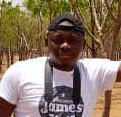The forests of Central Africa, which include the Congo Basin – a carbon sink like no other, absorbing more carbon than forests of the Amazon and South-East Asia – are at risk of climate change, environmental degradation, deforestation and population explosion. And the countries of the sub-region have a problem. They lack the requisite financial resources to preserve the ecosystem widely known as the ‘lungs of Africa’ which holds at least 80 billion tons of carbon.
Despite the essential role forests of Central Africa play in sequestering global carbon emissions, a new report produced by the Central Africa Forest Observatory (OFAC) has shown that forests of the sub-region do not seem to attract much funding like their counterparts of Amazon and South-East Asia. Between 2008 and 2017, the forests of Central Africa managed to secure only about 11% of international financial flows destined to sustainable management and conservation of the world’s tropical forests, according to the report titled Congo Basin Forests – State of the Forests 2021.
So far, funds mobilized for the forests of Central Africa partially pass through the executive secretariat of the Central Africa Forests Commission (COMIFAC); a body created in 1999 to coordinate conservation and ecosystem management efforts as well as the fight against climate change in Central Africa. COMIFAC has a convergence plan, supplemented by a business roadmap, which serves as blueprint.
The report indicates that member states of the Economic Community of Central African States (ECCAS) instituted a self-financing mechanism known as Community Integration Contribution (CCI); a 0.4% tax levied on products imported from countries outside ECCAS and consumed by member states. To finance its own operations and activities, 0.1% of the CCI is supposed to be automatically retroceded to COMIFAC. But ECCAS has faced difficulties recovering the CCI tax and the quota destined to COMIFAC has not been paid continuously, according to the researchers. The CCI however remains an important income stream for COMIFAC, with 320 million francs CFA pumped in by ECCAS in 2018.

Share of Forestry and Environmental Official Development Assistance. Source: Favada et al. 2019
Another source of income highlighted in the report is member states’ annual contribution which stands at 45 million francs CFA per country. Though designated as a primary source of income, member countries have not been contributing regularly. Besides Cameroon which has been paying its dues in full, the arrears stood at 3 billion francs CFA in 2021.
“This laxity in own contributions do not permit COMIFAC to fully assume its missions. The fact that no sanctions exist for countries which fail contribute and no advantage for those that are up-to-date doesn’t permit COMIFAC to shine,” Richard Eba’a Atyi, Regional Coordinator of CIFOR-ICRAF Central Africa Office, a contributor to the chapter of the report, said.
The report also shows that international partners and development actors have been very instrumental in setting up programs, projects and platforms to support COMIFAC’s Convergence Plan. Notable amongst the interventions is Germany’s 147-million-euro commitment made between 2005 and 2022 in favour of Central Africa’s forests. The European Union also mobilized 14 million euros between 2007 and 2022 to support OFAC operations. In addition, the EU has been a key donor to the Central African Forest Ecosystem (ECOFAC) program, the last of its six phases which required 85.5 million euros.

Signing ceremony on 26 July 2012 in Rome of a regional forestry project between FAO and the Central Africa Forests Commission (COMIFAC) to help Congo Basin countries set up advanced national forest monitoring systems. Photo by Alessia Pierdomenico/FAO
Between 2008 and 2017, bilateral and multilateral financial flows to towards the forest and environmental sectors in Central Africa amounting to US$ 2 billion have been irregular, and have since 2015 been on the decline, according to the report. Environmental Official Development Assistance represented more than three quarters of total Forestry and Environmental Official Development Assistance. While Germany, EU, Global Environment Facility, United States and the World Bank, in descending order, were the five top donors, DR Congo, Chad, Cameroon, Rwanda, and Gabon, in descending order, were the five major beneficiaries.
Based on the study, the five major themes covered in Central African forests by international aid include biodiversity, environmental policy and administrative management, forestry policy and administrative management, environmental research and the protection of the biosphere. These five themes gulped 89% of all Forestry and Environmental Official Development Assistance, which, according to the researchers, represents an imbalance in attribution and is detrimental to the sub-region. Forestry administration and environmental education/training accounted for the lowest share – less than 0.03% each – while environmental research, forestry education and training, wood energy, and forestry research received negligible funding.
Citing a study commissioned in 2021 by COMIFAC to elaborate its Convergence Plan, the researchers indicate that about US$ 191.3 million would be required to execute priority actions between 2021 and 2025 in Central Africa. The researchers suggest that COMIFAC could raise this money from several sources, amongst them: African Development Bank, European Union, UNFCCC funds administered by World Bank and UN, Germany, Norway, United Kingdom initiative, as well as international non-governmental organisations.
To achieved this, the researchers recommend that COMIFAC should up its game, strengthening communication and its participation in international debates in order to draw the attention of international actors to the importance of the forests of Central Africa.
We want you to share Forests News content, which is licensed under Creative Commons Attribution-NonCommercial-ShareAlike 4.0 International (CC BY-NC-SA 4.0). This means you are free to redistribute our material for non-commercial purposes. All we ask is that you give Forests News appropriate credit and link to the original Forests News content, indicate if changes were made, and distribute your contributions under the same Creative Commons license. You must notify Forests News if you repost, reprint or reuse our materials by contacting forestsnews@cifor-icraf.org.













